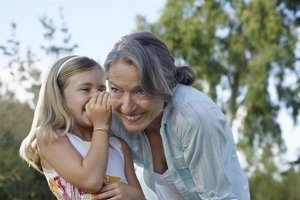 Recently my dear friend’s grandmother died at 96. I didn’t know much about “Gransie” except for the fact that my friend Karin kept in close contact with her, often visiting and taking her out to dinner with the family. My only thought about this woman I had never met or known was: I hope I have a granddaughter who is so loving and attentive if I am lucky enough to live that long. And of course the question begs, “What does one have to do to hold onto their children, grandchildren, and great-grandchildren throughout the course of their life time?”
Recently my dear friend’s grandmother died at 96. I didn’t know much about “Gransie” except for the fact that my friend Karin kept in close contact with her, often visiting and taking her out to dinner with the family. My only thought about this woman I had never met or known was: I hope I have a granddaughter who is so loving and attentive if I am lucky enough to live that long. And of course the question begs, “What does one have to do to hold onto their children, grandchildren, and great-grandchildren throughout the course of their life time?”
I got my answer when I attended Gransie’s funeral. In the synagogue that afternoon of the service, I witnessed several generations weeping openly, telling stories, and sharing their loss as they paid tribute to a woman who quite obviously and instinctively knew what attachment and connection were all about. I watched my friend grieving in deep sorrow, alongside her children, her father and mother, aunts, uncles, cousins, nieces, nephews, and great-grandchildren – people young and old, ranging in age from 7 to 70 and beyond. A woman beside me remarked at how difficult it was to see the little ones so sad. I said, “No, it’s wonderful. What an amazing attachment she has cultivated.”
What was clear to me was that Gransie lived her life with a huge heart, putting relationships and family first. In the days following I asked Karin what made her grandmother so special, what kept the connection so strong? I found some things out.
She collected everyone, all the time. She cursed the answering machines, always demanding a real voice. She sent birthday cards and letters to every niece, great-niece, and grandchild and made sure they left with packages of Hungarian cabbage roles and cakes after visits with her. This was how she continued to nourish them even when apart from her. She made everyone feel special, always welcoming new family members and in-laws with open arms and a message of “what is mine is yours…let me make you feel taken care of.” She never forgot a promise for a visit, or a dinner out. In my friend’s words, “She made me feel safe. She was in charge and I could go to her with anything… any worry, sadness, concern… she could handle it, take it all in, and give me a sense that everything would be okay. I could hand my problems over to her, and rest knowing she would take care of me. Even her house, her bathroom, her clothes… they reminded me of what she stood for and I found
comfort in everything that was hers.”
Karin’s grandmother had what is called a strong “alpha presence.” She was amazingly caring and soft-hearted. And she was bossy, feisty, spoke her mind, and didn’t take any guff. She suffered great loss and tragedy in her life but came through with resilience. Her message to her loved ones was: “Bring it on. I can take it. I will take care of you.”
I am reminded of Dr. Neufeld’s powerful description of the deepest attachment possible with another: the attachment that invites another to be fully known and understood, that invites all parts in… not just the good, but also all the worries, the sadness, the confusion, the anger – the vulnerability that makes us fully human. This kind of connection doesn’t go away. Even after her death, Gransie will always be there to guide and influence Karin for the rest of her life. That is
what deep attachment is about. It’s forever.
